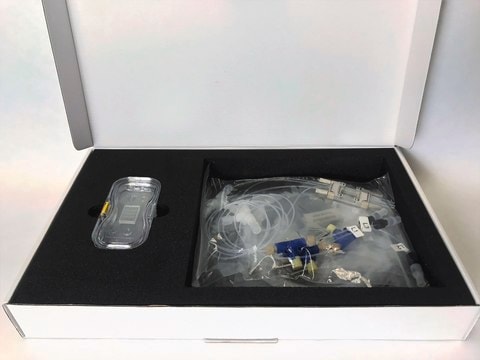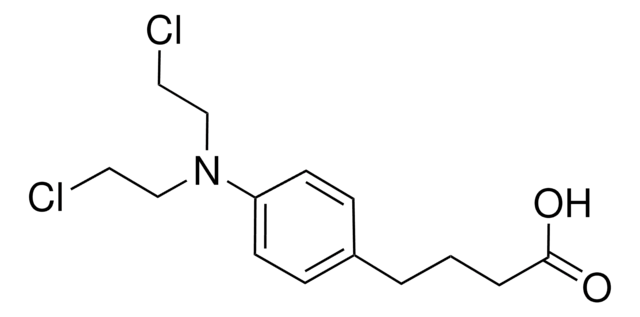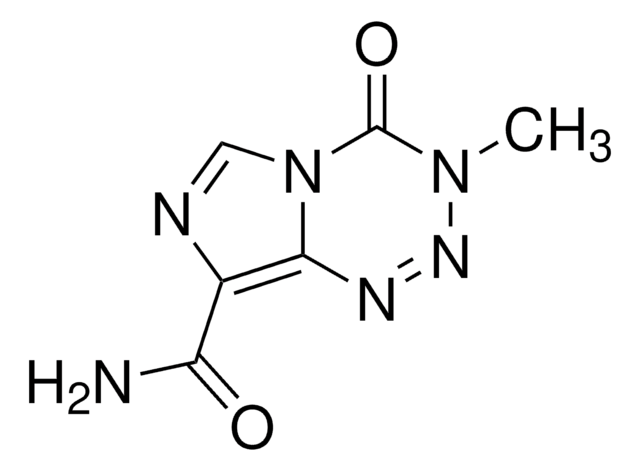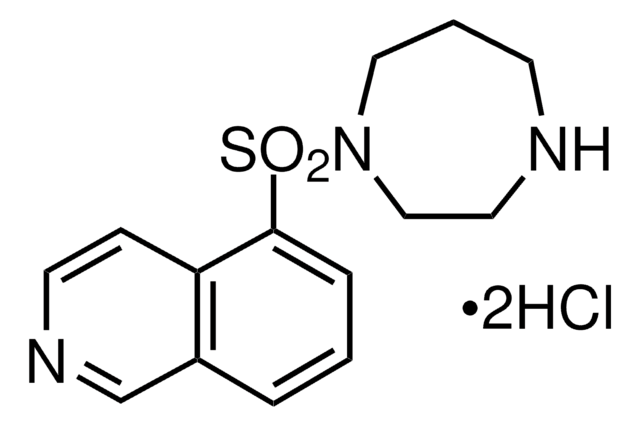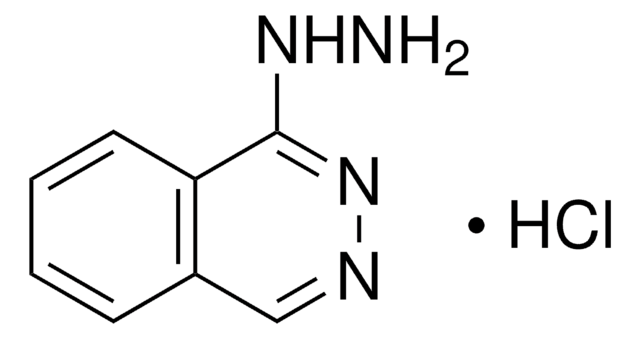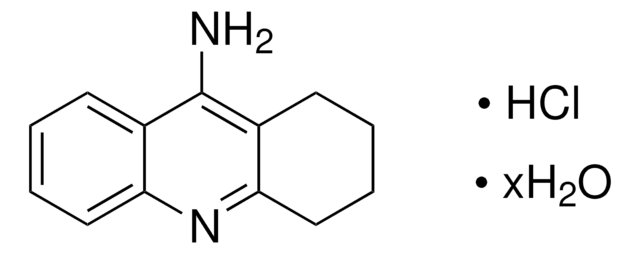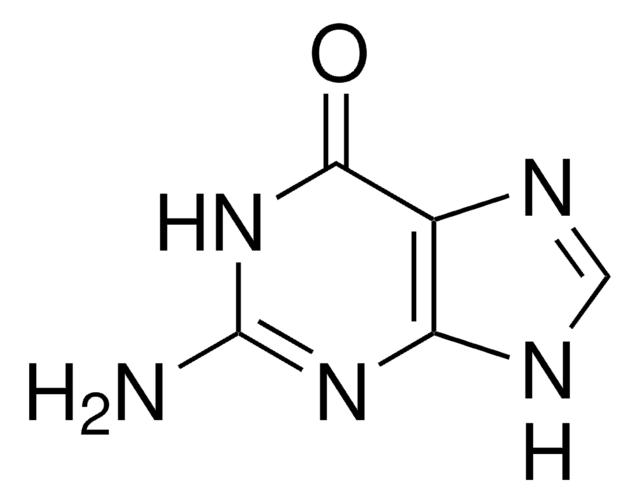Kluczowe dokumenty
B2292
O6-Benzylguanine
≥98% (TLC), solid, O⁶-alkylguanine DNA alkyltransferase inhiitor
About This Item
Polecane produkty
Nazwa produktu
O6-Benzylguanine, ≥98% (TLC), solid
Poziom jakości
Próba
≥98% (TLC)
Formularz
solid
rozpuszczalność
methanol: 20 mg/mL
temp. przechowywania
room temp
ciąg SMILES
Nc1nc(OCc2ccccc2)c3nc[nH]c3n1
InChI
1S/C12H11N5O/c13-12-16-10-9(14-7-15-10)11(17-12)18-6-8-4-2-1-3-5-8/h1-5,7H,6H2,(H3,13,14,15,16,17)
Klucz InChI
KRWMERLEINMZFT-UHFFFAOYSA-N
informacje o genach
human ... MGMT(4255)
Szukasz podobnych produktów? Odwiedź Przewodnik dotyczący porównywania produktów
Zastosowanie
- as an inhibitor of methylguanine methyltransferase (MGMT) in glioblastoma stem cell
- as a O6-alkylguanine-alkyltransferase (AGT) enzyme inhibitor in embryonic stem cells prior to N-ethyl-N-nitrosourea(ENU) treatment
- as an inhibitor of AGT in growth inhibition assays of HL-60 human promyelocytic leukemia cells
Działania biochem./fizjol.
Hasło ostrzegawcze
Warning
Zwroty wskazujące rodzaj zagrożenia
Zwroty wskazujące środki ostrożności
Klasyfikacja zagrożeń
Eye Irrit. 2 - Skin Irrit. 2 - STOT SE 3
Organy docelowe
Respiratory system
Kod klasy składowania
11 - Combustible Solids
Klasa zagrożenia wodnego (WGK)
WGK 3
Temperatura zapłonu (°F)
Not applicable
Temperatura zapłonu (°C)
Not applicable
Środki ochrony indywidualnej
dust mask type N95 (US), Eyeshields, Gloves
Wybierz jedną z najnowszych wersji:
Masz już ten produkt?
Dokumenty związane z niedawno zakupionymi produktami zostały zamieszczone w Bibliotece dokumentów.
Klienci oglądali również te produkty
Nasz zespół naukowców ma doświadczenie we wszystkich obszarach badań, w tym w naukach przyrodniczych, materiałoznawstwie, syntezie chemicznej, chromatografii, analityce i wielu innych dziedzinach.
Skontaktuj się z zespołem ds. pomocy technicznej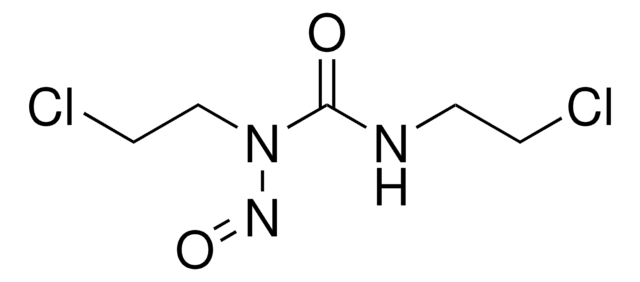

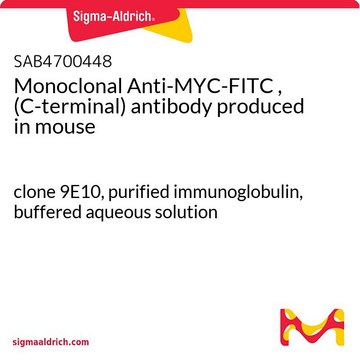
![[2-[2-(2-Methoxyethoxy)ethoxy]ethoxy]p-toluenesulfonate 90%](/deepweb/assets/sigmaaldrich/product/structures/246/083/be709a40-d1eb-4e98-9c26-c8c14e998696/640/be709a40-d1eb-4e98-9c26-c8c14e998696.png)

